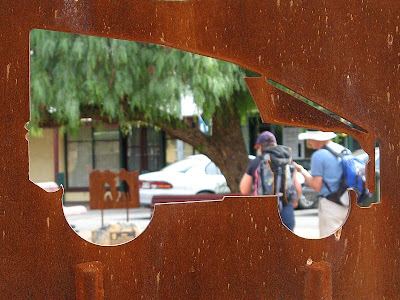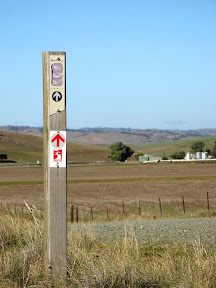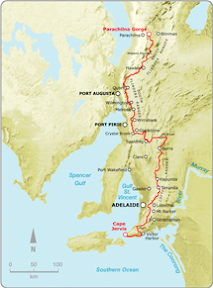The Rhinestone Cowboy that went too far
Mt Compass to Kyeema Conservation Park
Southern Guidebook, Maps 2.6-2.8
Simon has a habit of singing as he walks. I guess you can't deny him that right. Doesn't mean you should either enjoy it or endure it - especially when his chosen theme for the day is country songs. American, but still, country and western... urgh. Thankfully he didn't seem to know many, and those he did he knew very little of, and he didn't seem to be getting much encouragement.
Well worth walking up along the short - but steep - spur trail to the peak of Mt Magnificent. Simon played his bagpipes at the peak, roll your eyes, actually, no, unroll your eyes, I don't mind his bagpipes. An adrenalin rush coming back down, I ran, yes, you read correct, I ran down, proving how much better my knees are this hiking season.
After discussions with another (who will not be incriminated here) about the activities that took place at the dubious looking Kuitpo Community - it had all the appearance of a cult hide-out. Think guns and terrorists, or at least churches and silly games. It was none of the above, I googled it, it's a drug and alcohol rehab facility with a fairly long history. Now that's cool. Glad I waved at that guy and he was too far away to see my questionably expression.
We escaped the bulls atop the hill near Blackfellows Road and walked onto the end of the walk. Here, just before the end, we set ourselves up in two lines, and led by Simon's bagpipe efforts we marched in to the other waiting hikers. Simon really got a showing this walk, heh? Finished off with some birthday cake for Jerry's 50th. Nice one.

















